And Still, Beauty
Surrounded by chaos, traveling close to despair, we can find solace in beauty that persists.
“The greatest beauty is organic wholeness, the wholeness of life and things, the divine beauty of the universe.” – John O’Donohue
Another opportunity for me to lead a retreat, and, like the retreatants, I am walking in silence, listening for the whispers of the living world. We began our time together by naming our hopes or longings for the weekend. It was clear that the state of our country weighed heavily on the hearts and minds and in the bodies of each of us. As we lingered over our meals at tables of four, shared conversations over coffee, or gazed out the windows as rain darkened the trunks of trees, our individual stories unfolded. Together they wove a pattern of heartbreak and sorrow for immigrants jailed without due process, the many forests open for cutting, loss of medical care for those who have so little at the hands of those who have so much … the list goes on.
We – the three co-leaders – planned this retreat with time for stories and conversations, singing, dancing, and spacious silence to wander the land. Eager for the depth of connection, it’s not long before we begin to feel buoyed by music, movement, laughter, silence, nature, and the growing awareness that we are building community. We offer practices that invite listening for the wisdom of trees, knowing that they have endured so much and for far longer than their human relatives. Here is a space to learn and to rest for a while from the burdens that have been weighing us down.
And while retreat participants are wandering the woods, so am I. Day one, I wander slowly, pausing to note the tiny lives surrounding the trees. Spring ephemerals – so named because their lives are fleeting – dot the leaf-littered ground. These plants host tiny flowers, breathtakingly beautiful, but close to the ground so attention must be paid. Walk too fast, and the Mayapples hide among the grasses. Get lost in my thoughts, and the stretches of white rue and wood anemones remain unseen. Yet if there was ever a time for the beauty of bluebells, the improbability of yellow trout lilies, or the whimsy of Dutchman’s breeches, isn’t this it? The ephemeral beauties have returned!
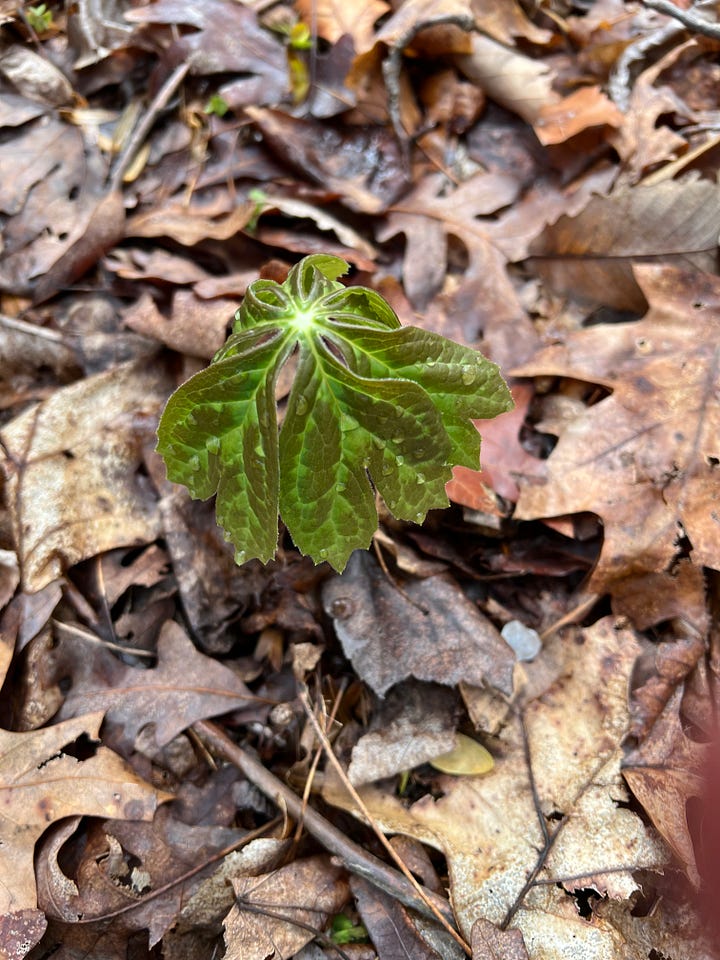
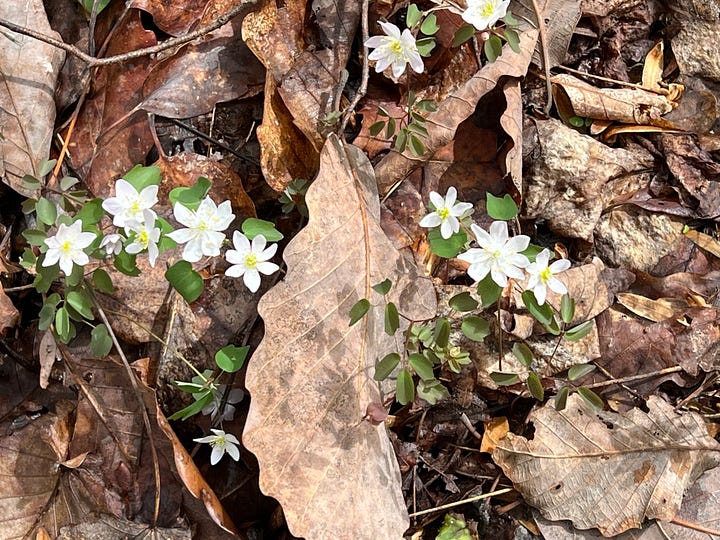
Despite the chaos of the human world, despite the destruction we have willingly and unwittingly visited upon their homes, these annual-but-short-lived beauties have persisted. Would it not be a moral failing on my part not stop in wonder and bow to their loveliness? Certainly, without beauty, I am poorer. As I soak in their glory, I remember that life is filled with wonder.
That afternoon, we wander again. I am aware of fallen trees. Clearly a big wind has wreaked havoc in the woods. To clear the paths, humans with chain saws have removed sections of the fallen ones, allowing space for me to pass without climbing over large trunks. It’s a sad site in many ways. To have dedicated years to reaching skyward, magically pulling water from the soil below to sustain growth, and to now lie in state before me. How many decades of leaves unfolded to embrace the summer sunshine, then released to the ground to be remade into soil? Now once towering trunks have begun their own slow slide into decay. Sad as it is to see them there, this scene is not without beauty. Fungi have joined in the cycle, creating another form of life, and offering incredible beauty in function and form. Turkey tails, with their capacity to break down the tough lignin and cellulose, have begun the steady process of creating rich organic matter from the logs. Running the full length of the trunks, interspersed with mosses and lichen, these medicinal mushrooms feature a beautifully rich palate of browns and creams.
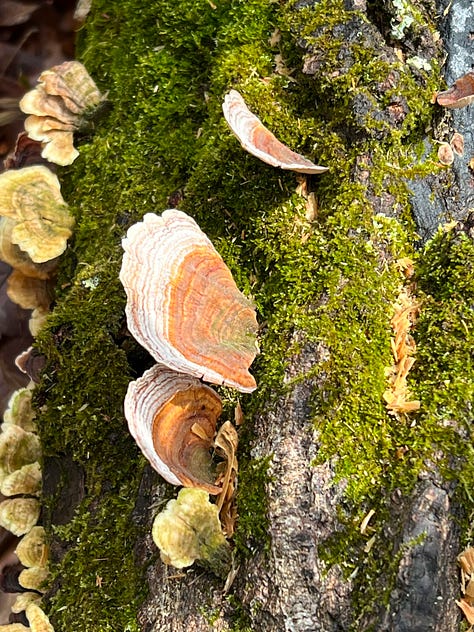
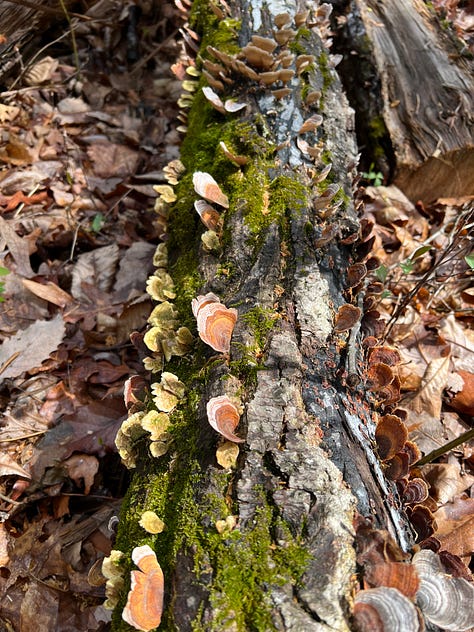
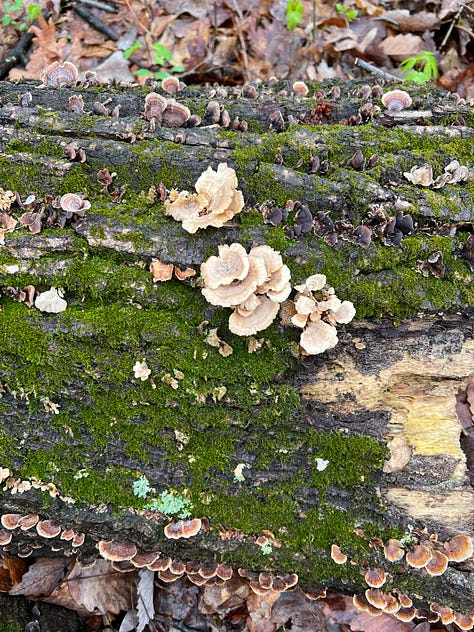
Beth Norcross, my friend and the co-author with me of our soon-to-be published book1, is fond of saying, “In a forest, death does not have the final word.” Indeed, it’s difficult to establish a boundary between death and life as fallen trunks and limbs collaborate with the fungi to become nurse logs that host life for ferns, plants, and tiny saplings. Nutrients once held within the tree live on within the cells of a multitude of lives. Woodlands weave a story of death and rebirth. And beauty.
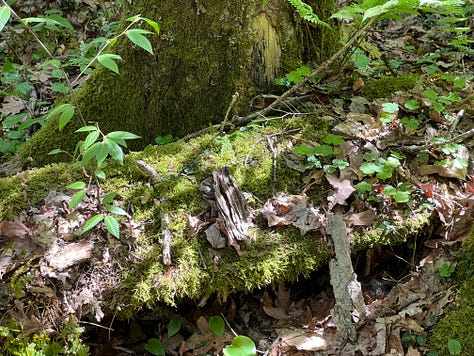
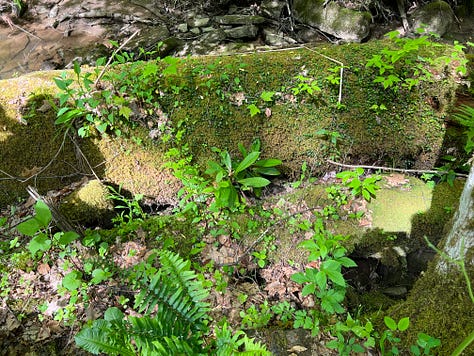

On the second day, I remain at the edge where meadow meets woods. My eyes are drawn to the broad vista before me. Then something stirs at the edge of my awareness and calls for me to pay closer attention. Violets and dandelions cluster around my feet. But the white cupped flower edged with delicate pink that draws my attention offers herself to me at eye level. I recognize the dogwood’s bloom, but where is the tree? And then I see that amidst an immense tangle of grapevine, she is held captive by this plant who has used her to climb toward the light. I can barely spot her trunk where the thick vines first made their way into her branches for now the vines have spread and intertwined so far that they are like woven steel bands. Mingling with blackberry brambles and prickly holly bushes, it is a forbidden forest, dark and entangled. Or at least it would be if my feet were not firmly planted in the meadow.
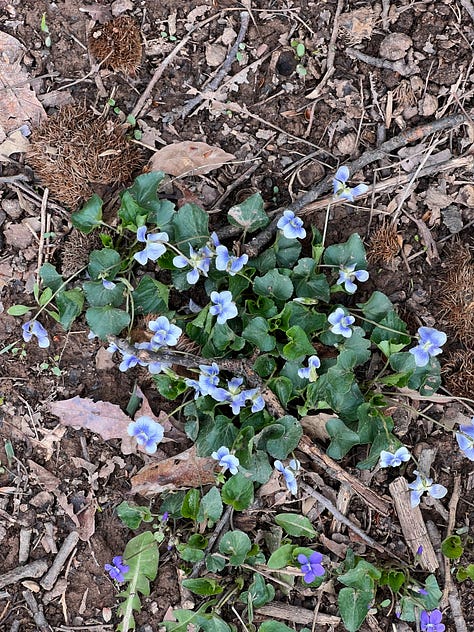
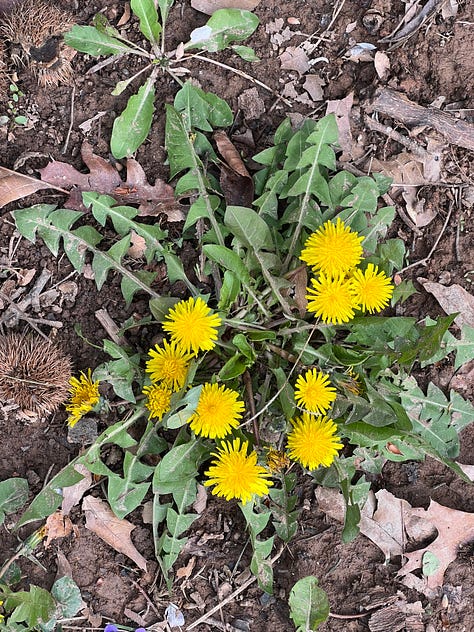
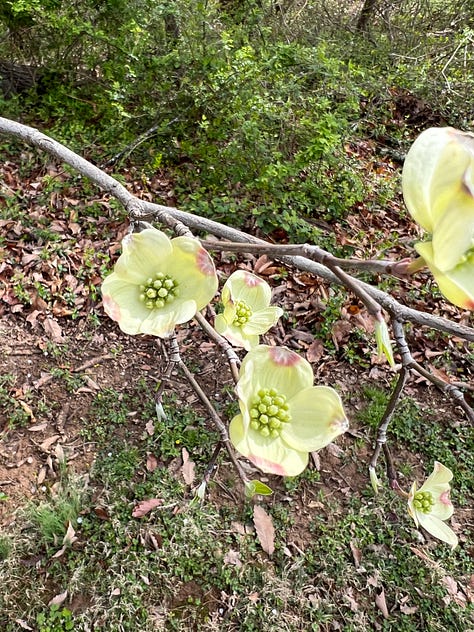
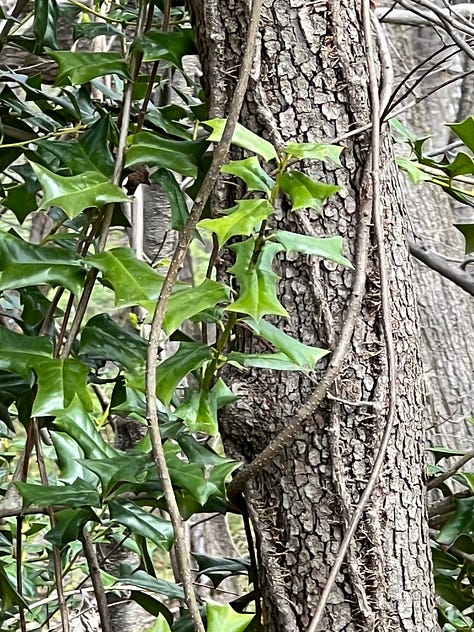
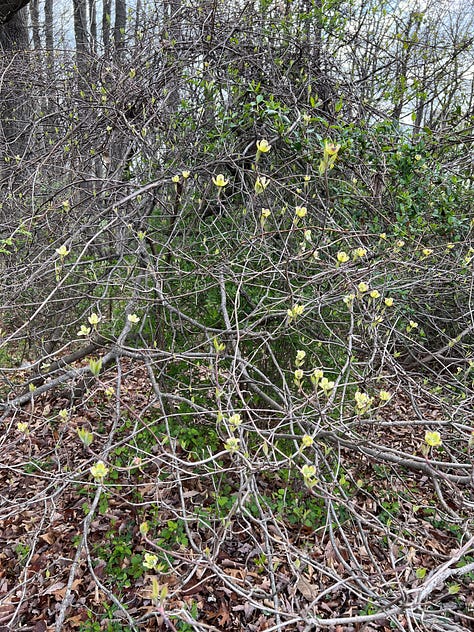
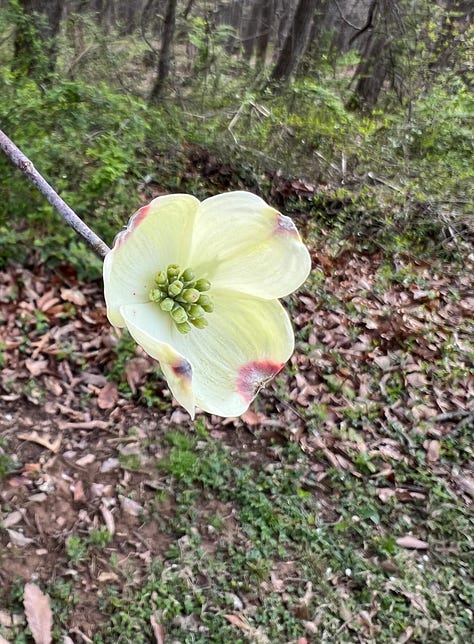
It is a reminder that the living world both collaborates and competes. My sympathy is with the dogwood trees – for now I see that there are several of them. Grapevines grab the sunlight that the leaves need to photosynthesize, pull water and nutrients from the soil that the trees need for growth, break branches with their weighty tangle, and wrap the tree so tightly that it warps the growth. These poor dogwoods are literally being strangled.
And still, beauty. Before me are tiny delicate cream-colored flowers, their edges smudged with the palest of pink. Last fall, the dogwood wrapped leaves and flowers into tiny buds and held them on its branches through the long winter. These wee packets of potential waited until the lengthening days signaled that it was safe to come out – and then they unfurled into the world. A moment of fleeting beauty against a tangled and suffocating backdrop.
I return to the retreat house, grateful for the beautiful harmonies we will make in song and chant, for the embodied weaving of our sacred circle dancing, for sharing by the light of an evening fire, and for the ways that all of this invites us into community with the entire ecosystem in which we have wandered. And grateful for beauty. Beauty does not erase the challenges and tragedies of our lives or the world. Yet she soothes heavy hearts and enlivens weary souls. And even amid loss and grief, beauty persists. In the face of darkness, beauty insists on making her presence known.
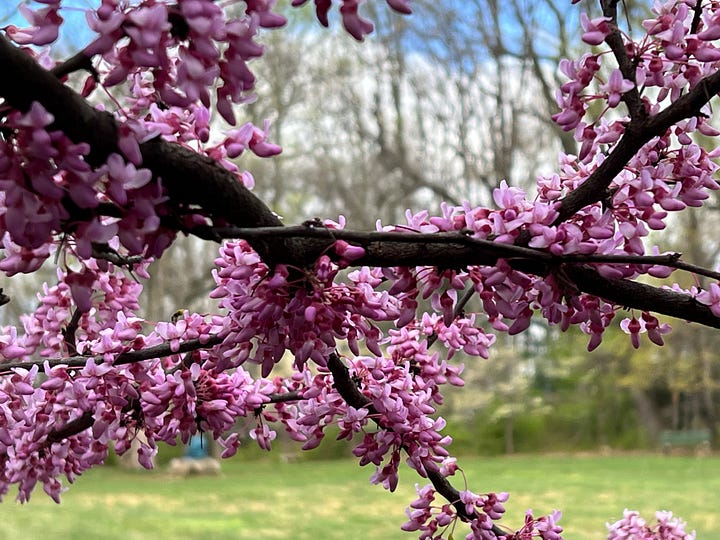
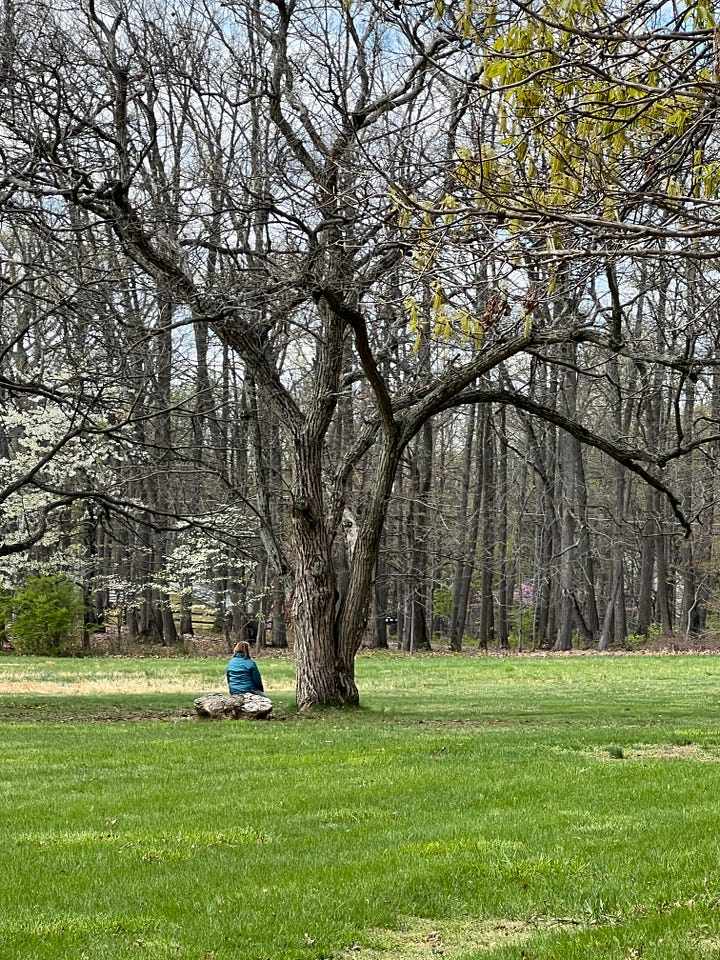
“As the late Irish poet and philosopher John O’Donohue noted, beauty may be ‘so quietly woven through our ordinary days that we hardly notice it.’ It will require slowing our pace and drawing out our gaze so that we might notice such subtle beauty. As we do so, we may see the exquisite detail of an oak leaf or catch the tangy scent of pine. Beauty has the gentle power to draw us inward, revealing in turn the beauty within our own souls as they harmonize with the ethereal music around us.”2
May it be so for you.
Discovering the Spiritual Wisdom of Trees by Beth Norcross and Leah Rampy, published by Broadleaf Books, will be released on April 22, 2025 - Earth Day!
Leah Rampy. Earth & Soul: Reconnecting amid Climate Chaos. Bold Story Press, 2024, p. 11.
You’re invited to join us for an Earth Day celebration at 7pm EDT via Zoom to officially launch Discovering the Spiritual Wisdom of Trees. Beth Norcross and I will be on hand for readings, Q&A, and giveaways. We’d be happy to have you on the call to help us celebrate. RSVP HERE




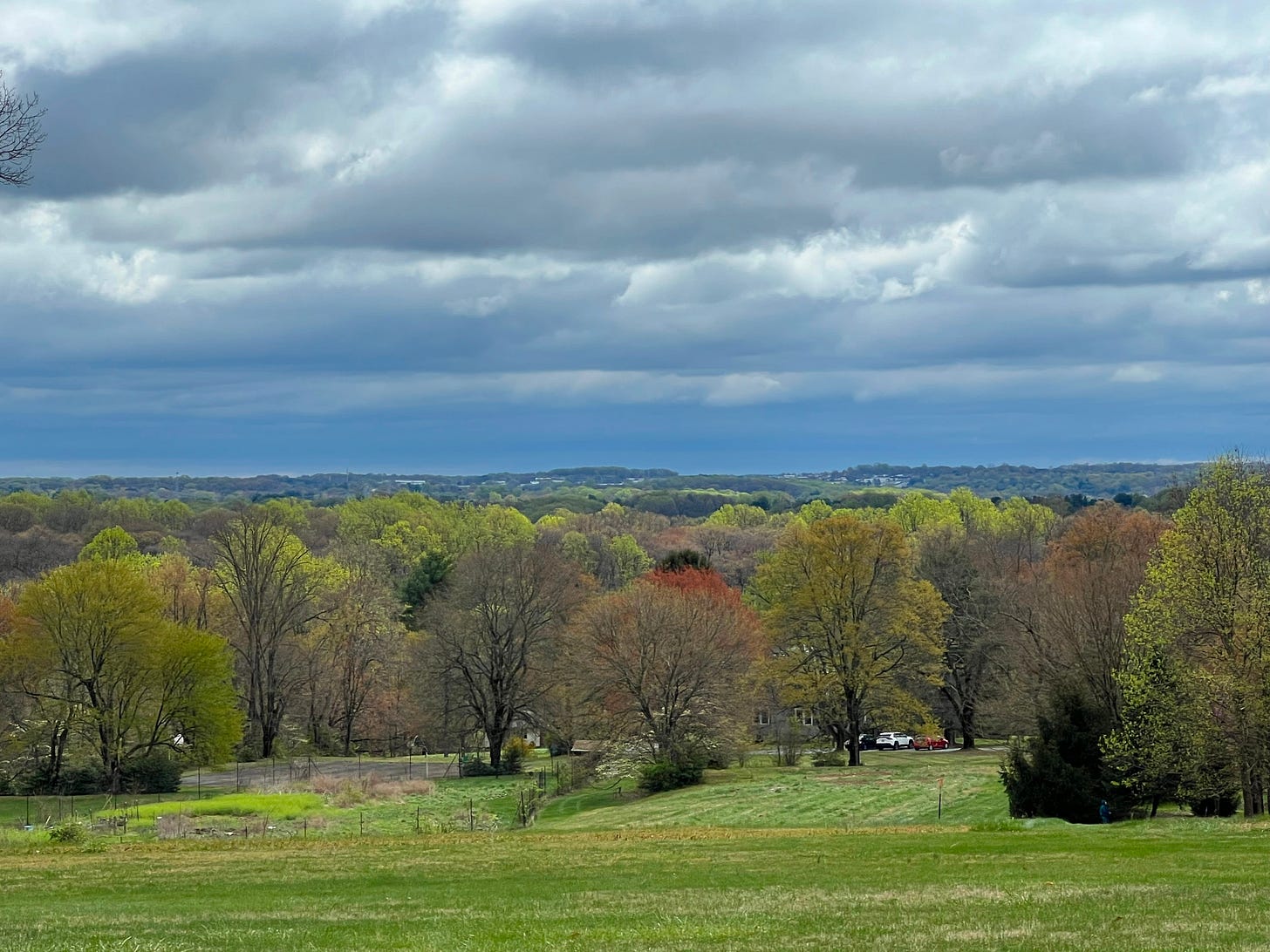
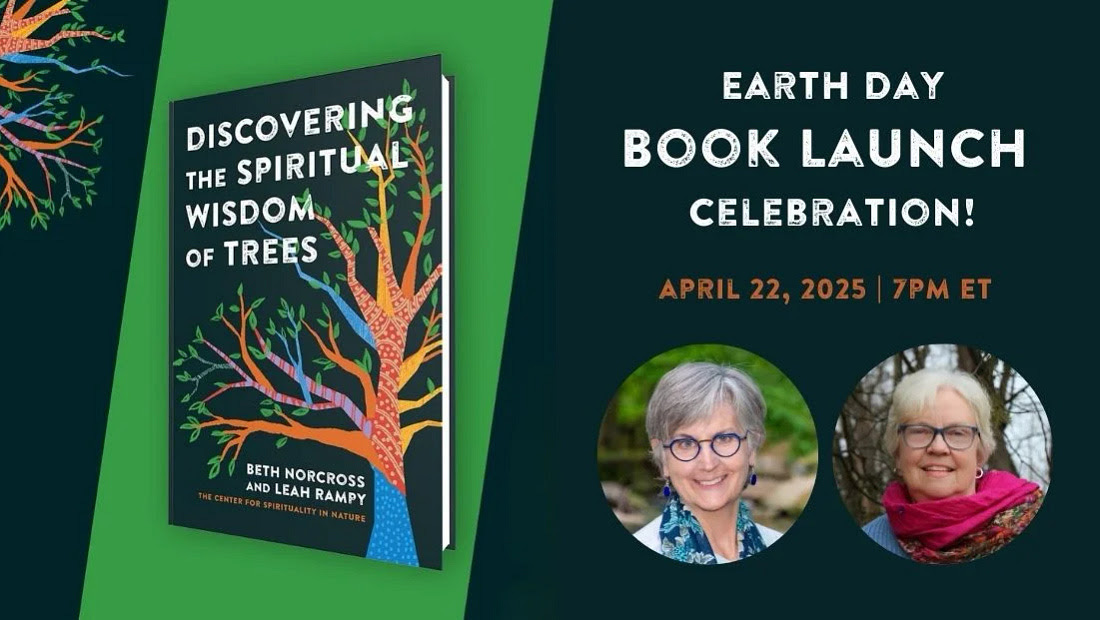
Leah, I'm so sorry I had to miss your retreat. It sounds like it was a fulfilling and healing experience for everyone. Your beautiful photos and inspiring words help ease the pain of this time we now live in that is filled with the deepest sorrow, and yes, anger. Thank you.
Thank you Leah, it is so enlightening to listen to your inspiring wisdom. We experienced the same on our retreat last weekend.
Nature is teaching.
Nature is healing.
Nature is home....
Be safe.